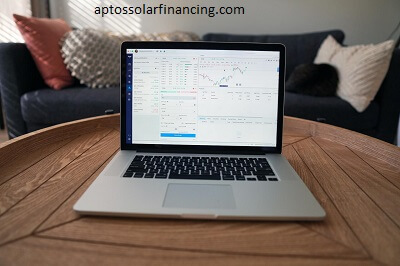What is MOIC in Finance? A major investor metric:
Understanding the performance measures of an investment is critical in the world of finance, particularly in private equity, venture capital, and real estate investments. MOIC (Multiple on Invested Capital) is one method for determining this type of performance.
The MOIC is a basic yet effective tool for investors to determine how profitable their assets are. This article examines MOIC, including its definition, calculation, relevance, and restrictions.
What is MOIC?
MOIC stands for Multiple on Invested Capital. It is a financial indicator that measures the total investment return on the initial capital invested. In other words, it shows the investor how often he has recovered his initial investment. It is expressed as a multiple, such as 1.5x or 3.0x, and is typically used in conjunction with other metrics, such as the internal rate of return, to provide a more comprehensive picture of investment returns.
The main advantage is its simplicity. It is a basic calculation that allows you to understand how the value of an investment has increased or decreased, excluding the time value of money. Its simplicity makes it attractive for quick and easy performance evaluations that investors or fund managers can make.

How is MOIC Calculated?
The formula for the calculation of MOIC is:
MOSAIC:
=
Total Value of Investment (Realized + Unrealized)
Initial Invested Capital
MOIC=
Initial Invested Capital
Total Value of Investment (Realized + Unrealized)
Here’s a breakdown of the components:
Value of Total Investment: The total realized value, or the cash or other assets taken to date by the investor from the investment, plus unrealized value, the current estimated market value of the investment that has not been sold or liquidated.
Total Capital Invested:
Overall amount an investor initially committed/invested in this venture.
For instance, if an investor invests $1 million into a venture capital fund at the outset, then the total value of his investment realized and unrealized gains is $2.5 million at any one moment in time; the MOIC would be expressed as:
MOIC:
=
2.5
million
1
million
=
2.5
????
MOIC= 1million2.5million =2.5x
That would mean that this investment has increased 2.5 times over from its original size.
Why is MOIC Important?
MOIC is important on several fronts:
1. Simplicity and Clarity:
MOIC is one of the main advantages because the concept is simple. While other financial indicators are very complex, with different calculations and assumptions, they are still relatively simple as a way to understand investment returns. Investors can simply see how much their investments have grown without worrying about increasing returns or discount rates.
2. Flexibility Across Asset Classes:
They can be used across different asset classes, from private equity and venture capital to real estate, among others. This makes it a versatile tool in that investors can use it as the general standard by which they compare returns from different investments, irrespective of the asset class.
3. Alignment with Investment Objectives:
MOIC works for an investor whose aim is to generate absolute returns as opposed to relative returns. This is a critical measure for those private equity or venture capital firms whose objective it is to maximize the total return from their capital rather than achieve an absolute rate of return over a certain time.
For example, an investment that yields 2.0x MOIC might be considered very successful since the investor’s expectations would be met regarding absolute returns, even if it took longer than anticipated.
4. Unearned Gains Overview:
MOIC considers both unrealized and realized gain and, therefore, indicates an investment’s current value. For an investor in illiquids, for whom the greatest parts of an investment’s value may still be unrealized, this is specifically important.
Limitations of MOIC:
Although the MOIC proves to be a pretty helpful tool, some of its limitations investors should note include:
1. It does not account for the Time Value of Money:
Furthermore, MOIC does not account for one of finance’s fundamental concepts: the time value of money. That example, a dollar today has more value than a dollar tomorrow.
As a result, comparing investments with varying holding durations can be deceptive at times. For example, an investment that returns 2.0x over ten years is less appealing than one that produces the same multiple in five years but does not account for this disparity.
2. Does Not Reflect Cash Flows Timing:
MOIC does not provide any information about the timing of cash flows, which is important to investors relying on cash flow liquidity or to those managing portfolios subject to specific cash flow needs. Two investments with the same may have an entirely different cash flow profile and be less risky or more attractive to different investors based on their individual goals.
3. Ignores Risk Adjustments:
MOIC does not account for the risk of an investment. An exceptionally high may appear brilliant but, often, it may come at the back of a very aggressive investment policy. The investor would therefore have to look at other measures such as IRR or risk-adjusted return measures to complete the investment’s risk-return profile.
4. Unsuitability of MOIC in Short-term Investments:
MOIC applies best to long-term investments, for which the total value growth represents a critical factor. In short-term investments, the speed of return becomes more important, and will hardly make as much sense when compared to metrics such as annualized returns or IRR.

MOIC vs. IRR: Complementing Metrics:
While MOIC gives an absolute picture of the overall growth of an investment, it usually comes with an internal rate of return that takes into account the time value of money. IRR calculates ROI based on its cash flows and holding period to get a more accurate picture of how an investment has produced profits over time.
Using MOIC and IRR together allows an investor to measure the magnitude of an investment’s return using MOIC and its effectiveness in investing capital over time, which is reflected in IRR. This would therefore be most valuable in capital investments and venture capital, as both the total return and the time it takes to generate the return are decisive aspects.










